At the height of the pandemic, when planes around the world were lined up stationary as if in graveyards and airlines were battling to stave off bankruptcy, Heathrow declared that plans for a third runway had been put out to pasture.
Passenger numbers would take so long to recover, bosses reasoned, that moving ahead with the £14bn project would be foolhardy in the extreme.
Such was the doom and gloom that the then chief executive John Holland-Kaye said Europe’s largest aviation hub would probably not need a new landing strip for 15 years – and might not require one at all, depending on the severity of damage to the economy.
Yet just three years after the last Covid lockdowns were lifted, demand for flights has stormed back so strongly that the debate about the country’s once-again crowded airports is about to be reignited.
Heathrow is busy working on a revised blueprint for a third runway, together with more immediate measures to boost capacity. Boss Thomas Woldbye is expected to test the waters in meetings with key government figures at the Labour Party conference this week.
It is not the only airport eyeing expansion. Gatwick’s plans to turn an emergency landing strip into a fully fledged runway, bypassing the most stringent planning rules, will be put before the Government early next year.
Opponents of airport expansion, meanwhile, are dusting down their placards and preparing for legal challenges. The ranks of the anti-expansion brigade have been swelled by a new breed of protester who views air travel as a threat to the planet and is prepared to resort to extreme action to undermine it.
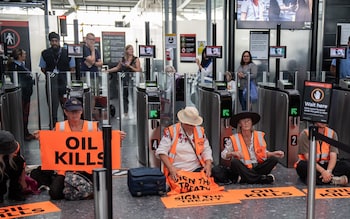
The confrontation is set to pit economic priorities against climate and environmental concerns. Labour’s response will go to the heart of its vision for Britain and test Sir Keir Starmer’s commitment to making the pursuit of growth his “number one mission”.
“Aviation is an enabler of everything else in the economy and an industry where Britain punches well above its weight, where we’re genuinely world-class,” said Tim Alderslade, the chief executive of trade group Airlines UK.
Whether or not the Government signs off on the Heathrow third runway will be the biggest decision it makes on aviation. Alderslade said: “Heathrow was full 10 years ago and it’s full again now. This isn’t something that’s going to go away.”
Path to jet zero
Rachel Reeves, the Chancellor, has stoked expectations that airport expansion will be looked upon favourably. Speaking before the election, she said that while Labour would need to consider all the evidence, she had “nothing against expanding airport capacity”.
After Labour’s victory, a spokesman for Sir Keir – who voted against a third runway in 2018 – said he “is not opposed in principle to new or longer runways or to people flying more”.
However, Downing Street cautions that such schemes must satisfy four tests: delivering growth across the country; meeting climate obligations; and complying with both noise and air pollution considerations.
How these tests are applied in practice remains vague and the industry is urgently in need of clarity. Trade group Airlines UK contends that members including British Airways, easyJet and Virgin Atlantic are already struggling to keep pace with the renewed appetite for travel.
Alderslade said: “The tourist market is back, European short haul is back and capacity is scarce, before we’ve even seen a full return in business demand.”
The economic rationale for expansion appears compelling. Britain has the third largest aviation sector in the world, behind only the US and China. Travel is central to the functioning of our island economy.
Heathrow alone accounts for a fifth of all UK trade by value and brings in passengers who spend £20bn a year. It ranks first in the world for global connectivity, according to a study this month, luring foreign companies and providing British business with vital export links.
Each UK-based aircraft directly supports 400 jobs and adds £27m in gross value to the economy, Airlines UK claims.
Moreover, Britain’s “jet zero” strategy, unveiled under Rishi Sunak in 2022, claims to provide a pathway to delivering an aviation industry with net zero carbon emissions by 2050, even accounting for a 70pc increase in passenger numbers, new infrastructure and all. It suggests airports can be expanded without blowing environmental targets.
Opponents of expansion, however, argue that new runways are nothing more than a one-way street towards increased noise and air pollution, gridlocked roads and climate-destroying CO2 emissions.
Jet zero, in particular, is fundamentally flawed, critics say, requiring an exponential increase in the production of sustainable aviation fuel (SAF), which is derived mostly from cooking oil and last year made up just 0.2pc of industry requirements.
Achieving the plan will also require the introduction of new aircraft technologies that aren’t currently even on the drawing board.
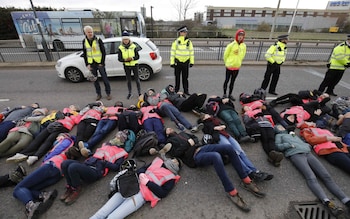
Extinction Rebellion, which has previously blocked roads near Heathrow and sought to disrupt services by flying drones nearby, warned that the aviation sector can expect a sustained campaign of direct action if it seeks to put new runways back on the agenda.
Founder Gail Bradbrook said: “There are ways to attack these suicidal policies other than just legal ones. Direct action has been made more difficult by changes in the law, but people aren’t going to be put off when we’re heading for a collapse of civilisation.”
Other tactics could include targeting insurers in a bid to force them to stop underwriting airlines, pulling the rug from beneath the industry, she said.
Pressure on Labour to confront the realities of burgeoning passenger demand is likely to increase, with summer travel figures revealing that many existing runways and terminals are already operating at, or close to, capacity.
Heathrow had its busiest day ever on August 18, serving 269,000 travellers, in what was also its busiest week, taking the rolling 12-month tally of passengers to a record 82.6m.
The number of routes attracting more than a million passengers increased by two to six, with Los Angeles and Madrid joining Doha, Dublin, Dubai and New York.
At Gatwick, the world’s busiest single-runway airport, it is also proving impossible to accommodate further aircraft during peak periods, a spokesman said.
Among Britain’s other leading airports, Stansted and sister hub Manchester, which are both expanding their terminal facilities, reported their busiest-ever months in August, five years after the prior records were set in the pre-Covid summer of 2019.
Michael O’Leary, the Ryanair chief executive, said there was evidence that the political tide was turning on aviation, as governments previously quick to condemn the industry for its contribution to carbon production softened their positions.
“You go back four or five years – aviation, despite only accounting for 2.5pc of emissions, was getting blamed for the whole of climate change and global warming,” he said.
“It was an easy hobby horse for them to all join in. The Swedes were talking about flight-shaming. Now the Swedes have abolished their aviation tax.
“We’re seeing that trend right across Europe. They’ve all begun to realise that we need to encourage air travel and tourism. It’s a key driver of economic growth, it’s good for society and it will take place on much more environmentally efficient aircraft.”
Labour has been ambivalent in its stance on airports: it opposed Heathrow expansion in 2018, but MPs were given a free vote, with 100 rebelling. But O’Leary said he blamed Boris Johnson and his plans for a Heathrow replacement in the Thames estuary for poisoning the well against expansion.
He said: “Labour, we hope, will tidy up. One of the ways to deliver growth, particularly post-Brexit, is to facilitate more investment in air travel and tourism.”
Whether that will extend to backing for an enlarged Heathrow, O’Leary is not so sure. A revival of plans to build a runway across the M25 is likely to prove tough to stomach.
Full continental airports
It is not only in England where airport expansion is an issue.
Ryanair, which carries more passengers on UK-based jets than any other airline, faces a battle over capacity closer to home. Its Dublin base is set to deprive airlines of operating slots next summer after falling foul of a 17-year-old planning law.
While the airport has an annual capacity of 60m passengers after the opening of a second runway in 2022, the regulation imposes a cap of 32m. Dublin expects to handle 33m this year due to the number of flights granted to airlines by the Irish Aviation Authority, suggesting plans must be curtailed.
Dublin Airport boss Kenny Jacobs said: “We want to grow, but we can’t until this planning condition is removed, so we’re having to ask the regulator to intervene and grant fewer flight slots to protect ourselves legally. It’s making me feel schizophrenic.”
The airport wants to raise the limit to 40m passengers and is applying to remove the cap, which Jacobs said is based on redundant concerns about the ability of local roads to handle airport traffic. However, it faces a three-year planning battle to do so.
A similar drama has been playing out in the Netherlands, where Amsterdam’s Schiphol airport, western Europe’s third-busiest after Heathrow and Paris Charles de Gaulle, was ordered to slash flights to reduce its noise profile in 2022.
The move to diminish a crown jewel of the Dutch economy met with incredulity from Schiphol and flag carrier KLM, and provoked alarm across the wider industry. The US department of transportation complained that the decision violated an open skies accord with the European Union.
The Dutch government initially backed off but this month confirmed that the plan will go ahead, albeit with a cap of between 475,000 and 485,000 annual flights, up from the 440,000 originally proposed. Flights at Schipol peaked at around 495,000 in 2019.
In the UK, Labour has taken tentative steps towards increasing airport capacity after raising a cap at London City by 40pc to 9m passengers a year. However, a partial weekend curfew was kept in place, assuaging some of the concerns of local residents.
A decision on whether to grant a development consent order to Luton Airport, which would lift its passenger cap from 19m a year to 32m, has meanwhile been delayed until February, suggesting that the Government remains conflicted in its reasoning.
A more significant test will come early next year, when it must decide whether to give the go ahead for a new runway at Gatwick, lifting capacity from 45m to 75m by the mid 2030s.
The airport initially sought to out-muscle Heathrow in pressing its case for a new runway serving the South East, before an independent commission established under former prime minister David Cameron found that its larger rival was the better location.
Gatwick responded with an application to transform its northern runway, traditionally used as a taxiway, into a fully fledged landing strip. The plan is categorised as making best use of an existing asset and so avoids some of the planning hurdles that have dogged Heathrow.
Stewart Wingate, Gatwick’s chief executive, told The Telegraph that the planning inspectorate was expected to deliver a report on the £2.2bn scheme by the end of November, after which Louise Haigh, the Transport Secretary, will have three months to reach a decision.
He said: “We’ve been working since 2017 to get to this stage. We carried on through Covid. We want this to happen and we’re very confident that it will.”
The new runway would create 14,000 new jobs, lifting employment at the airport to 40,000.
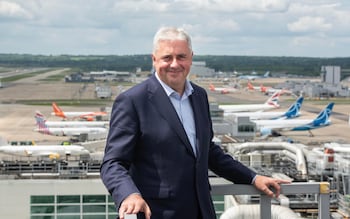
‘As one flight fades away, another comes over’
Labour’s overwhelming Commons majority means airport expansion is just one area where the Government can afford to be bold. Yet not everyone is in support of the plans.
Labour MP Ruth Cadbury, whose Brentford and Isleworth constituency is on the Heathrow flightpath, said she was one of 2m people affected by aircraft noise associated with the airport. Incoming aircraft wake her from 4.30am if she leaves a window open in the summer.
“As one flight fades away the next one comes over. It impacts our ability to enjoy where we live, our children’s learning and our mental and physical health.”
Cadbury is the new chairman of the Commons’ transport select committee and believes the Government shouldn’t ignore the real concerns of airport expansion opponents.
She said: “We can’t afford to be complacent. The success of the Greens and the priorities of younger people tell you that.
“The top, top issue in every school I visit is the climate crisis, what are you doing and why aren’t you doing more. And they are tomorrow’s voters.”
She is concerned that what relief there is from aircraft noise may disappear with the ending of the so-called Cranford Protocol, an agreement dating from the 1950s that previously outlawed eastbound take-offs from Heathrow’s northern runway.
While the lapsing of the accord will provide noise relief for people living in Windsor and other towns west of London, it could also open the door to so-called mixed-mode operations, with aircraft departing and arriving from both Heathrow runways simultaneously.
A senior Heathrow source said such a move could be more disruptive to residents than a new runway, and isn’t being pursued. Neither is there any intention to seek an extension of nighttime operations.
Still, Cadbury argued: “Even if they say they won’t, we would never trust them. Whatever one chief exec says now, history suggests it means diddly squat.”
At Heathrow, priority is instead being given to maximising passenger numbers on the 480,000 flights a year currently permitted. The extension of Terminal 5, which is used by British Airways, would boost long-haul operations and could swell the tally of people who pass through the airport each year to 90m.
A study into options for further expansion, including a third runway, should conclude in the coming weeks, though the airport is anxious to hear more from Labour before reaching any conclusions about the best way to proceed.
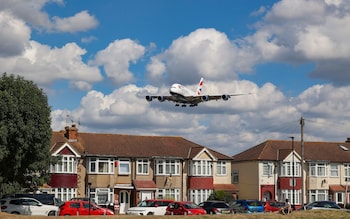
That includes more detail on the Government’s four tests, specifically what trade-off between growth and emissions it is prepared to contemplate, how much regional economies would need to benefit, and what noise and pollution levels would be deemed acceptable.
The source said: “We don’t know what the regional contribution needs to be or what the noise limit is. It’s like being told you’ll be sitting an exam but not what you’ll be tested on.”
While the airport is leaning towards taking forward plans for a third runway that have already been approved by Parliament, it is reluctant to do so without government backing, the source said.
Woldbye, Heathrow’s chief, will attend this week’s Labour conference in Liverpool, where he will seek to explain the airport’s stance to key figures and gain a better understanding of the Government’s position.
The Heathrow Association for the Control of Aircraft Noise (Hacan) contends that the hub’s expansion is neither compatible with environmental commitments nor justifiable on economic grounds.
Paul Beckford, the association’s policy director, said: “There’s a point where increased connectivity no longer adds value, and that’s a point that Heathrow reached years ago.
“There is plenty of alternative runway capacity around the country, for example in Manchester and Birmingham. That’s where the focus should be, on making the best use of existing infrastructure.”
Beckford said giving the green light to significant expansion at Gatwick and other airports in the South East could fundamentally undermine the case for enlarging Heathrow.
He said: “If Gatwick gets its runway and City and Luton expand, the gap that Heathrow will need to squeeze through gets even narrower. Every time you allow an airport to grow, the rest of the economy has to work even harder to cut emissions.”
Heathrow said it has increased its passenger count by 20pc without increasing its overall noise profile, aided by a switch to glide-based descents which use less throttle.
‘There’s no way Labour can permit new runways’
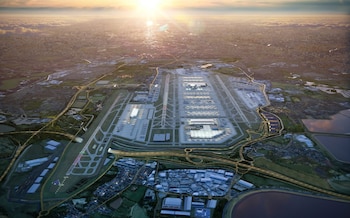
The biggest obstacle to the Government signing off on a third Heathrow runway, however, might come from the Climate Change Committee, an independent public body formed under the 2008 Climate Change Act to advise the Government on tackling global warming.
The ongoing expansion of airport capacity, even without additional runways, means that the UK is falling further and further behind the jet zero pathway to eliminating emissions, the committee said in a report last year.
The Government should therefore permit no airport expansion before establishing a UK-wide capacity management framework capable of reining in emissions if required, it concluded.
Beckford said: “Everybody knows that the industry can never reach net zero when that plan includes 70pc growth. There’s nowhere near enough SAF, and hydrogen technology is decades away. So there is no way that Labour can go ahead and permit new runways.”
Heathrow’s Matthew Gorman, director of carbon strategy and sustainability, said the airport was already the world leader in SAF usage, with the fuel expected to make up 2.5pc of total requirements this year, well on the way to the Government’s target of 10pc by 2030.
At Airlines UK, Tim Alderslade said the Government was facing a clear choice: “We can take the carbon out of aviation and there’s a credible plan to do so and we’re making good progress. But constraining demand now would be putting the cart before the horse.
“Government has levers it can pull if the sector is not on track. But if you don’t put the capacity in place, assuming of course it’s affordable, it’s not going to be there when we need it. If we want growth in the economy we need aviation.”
A DfT spokesman said that all airport expansion proposals must demonstrate that they contribute to economic growth, while remaining in line with existing environmental obligations. The spokesman didn’t provide further details.
The Government is expected to respond to issues raised by the CCC in the autumn.
Disclaimer: The copyright of this article belongs to the original author. Reposting this article is solely for the purpose of information dissemination and does not constitute any investment advice. If there is any infringement, please contact us immediately. We will make corrections or deletions as necessary. Thank you.



